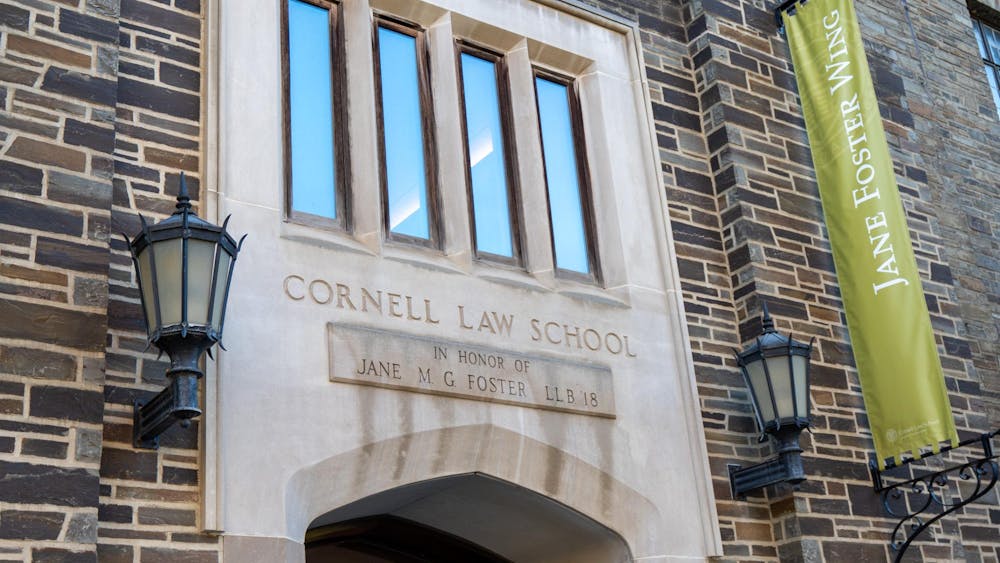Two Cornell students have created BrailleWear, a smart glove that aims to improve accessibility and increase braille literacy rates among the visually impaired.
BrailleWear was co-founded by information science student Kushagra Jain ’23 and Nolan School of Hotel Administration student Lyon Li ’23 in 2022. The duo founded BrailleWear under their company ORama AI to develop and manufacture a smart glove that would enable the visually impaired to read braille while also learning how to understand braille code in the process.
The Technology
The smart glove is worn on the user’s right hand. A camera is located between its thumb and index finger, tracking the movement of the index finger as it traces the braille. Computer vision technology is then used to translate and read aloud the braille that was just traced.
“If you traced the word cat, the glove would read out ‘C-A-T cat’,” Jain said. “It’s almost like Google translate which would point at another language’s text and read out the translation — it’s the same for braille. [The user] uses the glove to feel the braille dots and can correlate the pattern with its audio translation.”
The smart glove utilizes a custom-built neural network architecture, an artificial intelligence technology, along with a language model to identify the braille characters. The working model yields 95+ percent accuracy under intended use conditions.
Braille is a universal character set, meaning that the BrailleWear smart glove can be used in many languages.
“The only [step] that changes is the language model, which can be switched out for any language you’re reading in,” Jain said.
The project was largely influenced by Jain’s experiences while volunteering at an institution for the visually impaired in Bengaluru, India, where he developed a close bond with many of the students. As he continued volunteering, Jain said he was surprised to learn that braille was inaccessible to many of his mentees.
“A large number of them did not know braille,” Jain said. “When I spoke to other teachers, they told me about how important it was to know braille — they compared [knowing braille] to being literate for non-visually impaired people.”
Inspired, Jain conducted his own personal research and found alarmingly low braille literacy rates in India, as expenses prevented families from being able to afford braille lessons.
Entrepreneurial Duo
Jain and Li developed their partnership while studying abroad together at the University of Cambridge in the United Kingdom. There, they developed a method for technologically identifying braille patterns without coming into physical contact with them and subsequently became the first undergraduates to win the 2022 Parmee Prize at Pembroke College Cambridge, a prestigious annual entrepreneurship competition.
Jain and Li continued developing BrailleWear upon their return to Cornell. In the fall semester, they were one of 28 teams chosen for the University’s eLab, a student start-up accelerator that prepares projects for launching and pitching to potential investors. Jain, a student in the College of Arts and Science’s Milstein Program in Technology and Humanity, also developed his ideas with assistance from the program.
The smart glove’s first working model was developed in November 2022. Since then, Jain and Li have been working to spread awareness about the product in visually impaired communities and related institutions.
“Almost every blind person that we’ve spoken to has expressed that learning braille has been tough and that they would be very interested in using this technology,” Li said. “However, most requests for the glove [have been made] through institutions which will then further distribute the product to the individuals themselves.”
The start-up has garnered national and international recognition. The duo showcased BrailleWear at the 2023 Consumer Technology Association’s Consumer Electronic Show, one of the largest consumer tech shows in the world, where they were named Innovation Award Honorees for Accessibility. They were also recently awarded the Phase 1 Small Business Innovation Research Grant, a National Science Foundation program that funds research and development.
BrailleWear has also attracted the attention of investors. Roger W. Ferguson Jr., former Vice Chair of the Federal Reserve and current board member at Google, became aware of the start-up during its presentation at Cambridge’s Parmee Prize, where he was a visiting professor.
“I found the technology very interesting [with its] ability to bring the artificial intelligence, camera and glove together,” Ferguson said in an interview with The Sun. “There was also a great social purpose, which I found very compelling.”
Ferguson has assisted Jain and Li by offering networking opportunities through Google’s accessibility department and his monetary support.
“I’ve gotten a great deal [out of my involvement] in terms of getting to know [Jain and Li] and learning the challenges that young entrepreneurs face while trying to maneuver from a great idea to a product,” Ferguson said.
Jain and Li have ambitious plans for BrailleWear’s future. They are open to offers from prospective investors and wish to establish connections with more institutions for the visually impaired.
“Our short-term goal is to make a good, functional product that blind people will enjoy using and will help them overcome that barrier,” Li said. “Our long-term company mission is to teach one million [visually impaired] individuals braille. We’re hoping that 90 percent of blind individuals do know braille in 10 to 20 years from now due to our technology.”
Correction, May 23, 2:51 p.m.: A previous version of this article incorrectly stated that a federal law mandated students with disabilities be taught in public schools. The article has also been corrected to exclude a statistic that 90 percent of the blind community does not know braille, which has been proven false.











